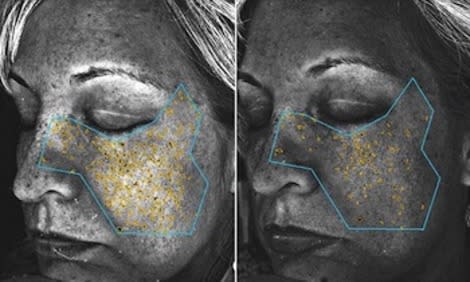NASA Space Drink Could Reverse Signs of Aging

UPDATE: According to the University of Utah, no faculty members were involved in creating "AS10." A spokesperson for AmeriScience, the company that produces the drink, clarifies that it uses the same antioxidant ingredients as found in gel caps given to astronauts but is not explicitly used by NASA.
An anti-oxidant packed juice that could turn back the clock on wrinkles, dark spots, and other sun damage? According to researchers at the University of Utah, this fountain of youth might not be science fiction.
The beverage, called AS10, was originally developed to combat the harmful effects of solar rays on astronauts who travel outside the protective layer of the Earth's atmosphere. According to the New York Daily News, AS10 was tested on 180 skin-damaged adults and showed promising results. After four months of drinking two servings daily, dark spots were reduced by 30% and wrinkles by 17%. Digital skin analyses were used to confirm the results.
Radiation particles alter oxygen molecules in the body to create "free radicals," unstable electrons that attack cells and may accelerate the aging process. "Think of them as little Pac-men taking bites out of molecules that are essential for cells to function," Dr. Aaron Barson, who worked on the study, told the Daily Mail. AS10 contains high levels of free-radical fighting anti-oxidants derived from fruits including acai, acerola, prickly pear, green tea, pomegranate, and cupuacu (a member of the cacao family).
Barson says he's planning a broader study this summer. "The effects of oxidative stress on the skin can quickly be modified and the skin can heal itself by drinking AS10."
The active compounds in AS10 were originally tested on mice in a study published the journal Radiation Research in 2011. Scientists found that animals exposed to high levels of radiation who received supplements had an 80% survival rate at 250 days and reduced symptoms compared to a 30% survival rate for the control group.
The big drawback to the new space drink? The cost. A monthly supply of AS10 costs over $100. Not exactly a jar of Tang.
